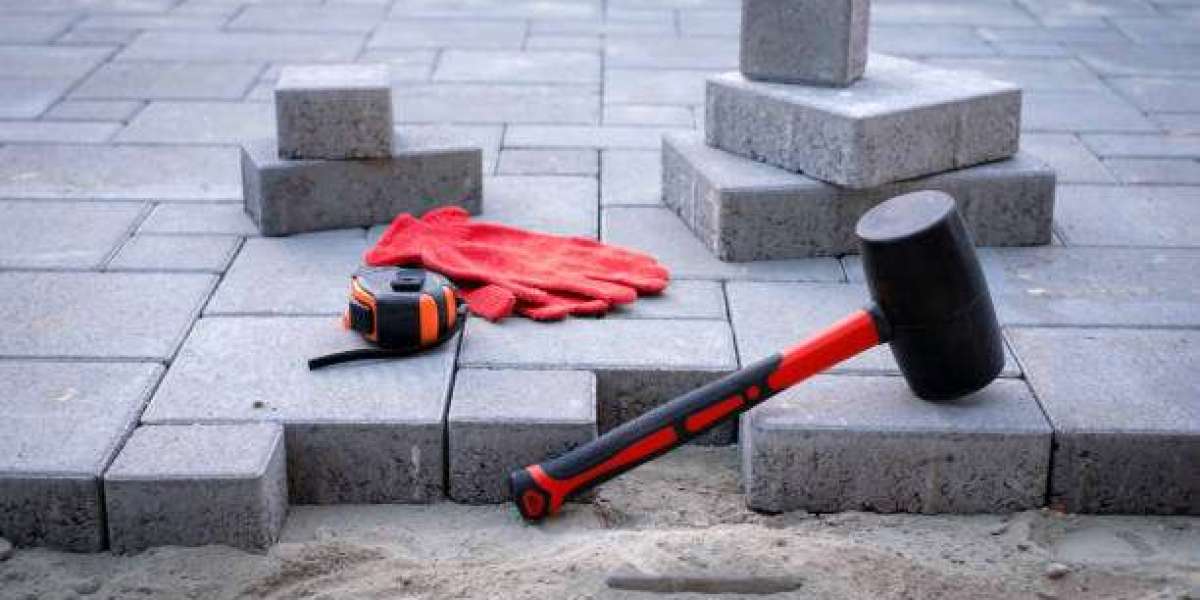Why the Paver Pattern Matters
A paver pattern can completely change how your space looks and feels. It affects everything — from the style and strength to how easy it is to walk or drive on. Some patterns are better for heavy traffic, while others are perfect for adding charm and beauty to patios or garden paths.
Choosing the right paver pattern helps your project last longer and look better.
Understand Your Project
The first step is knowing where your pavers will go. A paver pattern that works for a driveway might not be right for a small garden path.
- Driveways: Go for strong, interlocking patterns like herringbone.
- Patios: Try creative patterns like basket weave or circular layouts.
- Walkways: Use running bond or linear designs that guide the path.
- Pool areas: Choose patterns with fewer gaps and good traction.
Think about how the space will be used before choosing your paver pattern.
Pick the Right Paver Shape
Pavers come in many shapes — square, rectangle, and even irregular ones. The shape determines what kind of paver pattern you can create.
- Rectangular pavers are great for herringbone or running bond patterns.
- Square pavers work well for grid or stack bond designs.
- Irregular pavers give a more natural and rustic look.
Lay a few out on the ground to see how your paver pattern might look before committing.
Match the Style to Your Home
Your paver pattern should complement your home’s design.
- Traditional homes: Basket weave or herringbone patterns look timeless.
- Modern homes: Linear or stack bond patterns give a clean, sleek look.
- Cottage-style homes: Random or circular patterns add charm.
The goal is to match your pattern with your home’s personality, not compete with it.
Choose the Right Color and Texture
Even with the best paver pattern, the wrong color can throw off the whole design. Pick tones that match your house, garden, and landscape.
Warm colors like red, tan, and brown create a cozy feel. Cool tones like gray and charcoal look more modern. A mix of shades can make your paver pattern more natural and interesting.
Also, consider texture — smooth for modern designs, and rough for outdoor charm and grip.
Think About Strength and Durability
Not all paver patterns are equal when it comes to strength. Some designs lock together better and handle more pressure.
- Herringbone: One of the strongest options, ideal for driveways.
- Basket weave: Strong enough for patios and decorative spaces.
- Running bond: Simple and great for light traffic paths.
- Circular or fan patterns: Beautiful but best for low-traffic areas.
If your project will carry vehicles or heavy loads, choose a stronger paver pattern.
Plan Your Layout
Before starting, draw your layout or mark it on the ground with string or chalk. Start from a straight edge or center point, depending on your paver pattern. Dry-lay a few rows first to check alignment.
A little planning at the start will help you avoid mistakes later.
Prepare the Base
A strong base is key to making any paver pattern last. Dig out the area to the right depth — usually about 6 to 8 inches for patios and up to 12 inches for driveways.
Add crushed gravel and compact it well. Then, add a layer of sand and smooth it out evenly. This stable base will help prevent your pavers from sinking or shifting.
Start Laying Pavers
Now the fun begins! Lay your pavers in the pattern you chose. Work slowly and check that each paver fits snugly. Use a rubber mallet to tap them into place. Keep your lines straight and spacing consistent.
If you’re following a detailed paver pattern, take your time. The effort will pay off in the final look.
Fill the Gaps
Once all pavers are down, spread fine sand over the surface. Sweep it into the joints to lock the pavers together. Compact the surface, add more sand, and repeat until the gaps are filled.
This step strengthens your paver pattern and keeps it from moving.
Seal and Maintain
To finish, apply a sealer. This protects against stains, weeds, and fading. It also helps bring out the color of your pavers.
Keep your paver pattern looking great by sweeping regularly and rinsing with water when needed. Reseal every few years for long-lasting beauty.
Popular Paver Patterns to Try
Here are some popular paver pattern ideas to inspire your next project:
- Herringbone Pattern – Great strength and timeless style.
- Running Bond Pattern – Simple, clean, and easy to install.
- Basket Weave Pattern – Decorative and charming.
- Circular Pattern – Unique and eye-catching.
- Random Pattern – Natural look for gardens or rustic homes.
Each paver pattern has its own charm and purpose, so pick one that fits your space best.
Simple Tips for a Professional Finish
- Measure your area carefully before starting.
- Keep lines straight and even.
- Use edge restraints to prevent shifting.
- Step back often to check your progress.
- Don’t rush — good work takes patience.
These small steps can make your paver pattern look like it was installed by a pro.
Conclusion
Choosing the right paver pattern takes a bit of planning, but it’s worth it. The pattern you pick adds both beauty and function to your outdoor space. Whether you go for a classic herringbone or a creative circular layout, your design should reflect your style and fit your needs.
With the right base, layout, and care, your paver pattern will stay strong and stunning for years.
FAQs About Paver Patterns
- What is the best paver pattern for driveways?
The herringbone paver pattern is best because it locks tightly and can handle heavy loads. - Can I mix more than one paver pattern in a project?
Yes. Mixing patterns adds depth and creativity, especially for large patios or pathways. - How do I prevent pavers from shifting?
A solid base and edge restraints will keep your paver pattern secure. - Should I seal my pavers?
Yes. Sealing protects the color, reduces weed growth, and keeps your pavers clean longer. - Which paver pattern is easiest to install?
Running bond is the simplest paver pattern and perfect for beginners.



